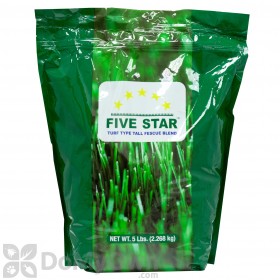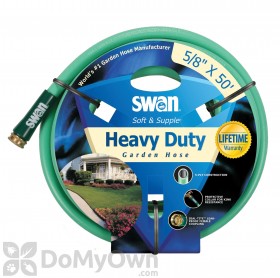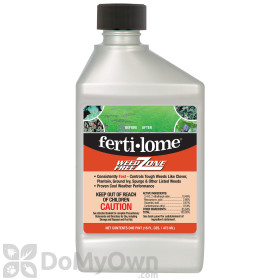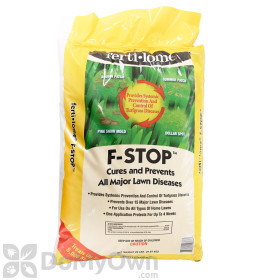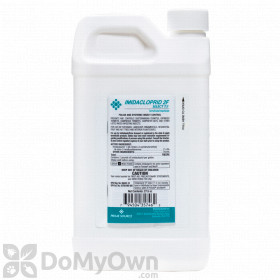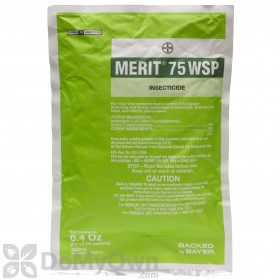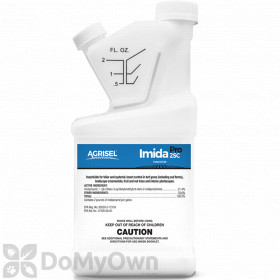
Known for staying green year-round, fescue grass is one of the most prevalent choices for residential lawns in the United States. Fescue is especially popular in the middle and northern United States because it can handle cold temperatures. It is also resistant to many diseases that can affect other grasses.
Our guide will cover the steps necessary to care for fescue grass so you can have the best lawn on your street. Read below for advice on:
What Does Fescue Grass Look Like?
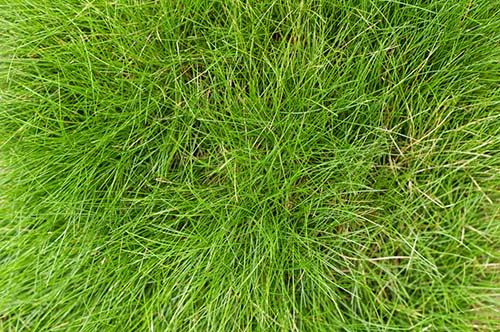
Fescue is a cool-season grass that stays green year-round. The grass can handle poor soil types like clay and sandy soil which are common in cold areas and areas of high elevation.
Fescue grass grows in bunches, with roots that are 2-3 feet deep. One stem of fescue grass will produce several vertical tillers, or off-shoots of grass, resulting in a bunching or clumping. Some fescue grows up and some grows out (also known as creeping).
There are several varieties of fescue grass used for lawns, including:
- Tall Fescue - The most popular fescue used for turf lawns. Tall fescue has long, thin blades that are coarse and dense within a yard.
- Hard Fescue - Grows best in areas of high elevation and in the northern United States as it is naturally salt tolerant (great for snow treatment). Hard fescue does not need to be mowed often, if at all.
- Chewings Fescue - Often confused with tall fescue, Chewings fescue grows upright and has a fine texture. Chewings fescue grows well in sandy soils and is drought resistant.
- Creeping Red Fescue - Often found in shaded areas and mixed with other cool-season grass types to help with that turf's shade tolerance. Creeping red fescue does not need much irrigation or extra nutrients to thrive.
- Fescue Blends - Bags of fescue grass seed and even some sods can be blends of different types of fescue. Blends offer the best features of different fescue types in one lawn. Blends are a smart choice for less than ideal soil types.
How to Care for Fescue Grass
Fescue grass will stay green year-round if given proper nutrients and care. By mowing, overseeding, aerating, fertilizing, and watering fescue grass, you can have one of the best yards in the neighborhood.
Mowing

Ideally, fescue grass blades should be kept at 2-3 inches long. If you have let your grass grow long during the cold winter months, you can do an initial mowing during the spring, but do not take off more than 1/3 of the length of grass or else the grass may become stressed.
Mow every 2-3 weeks as needed and every week during the spring. Once grass growth slows, typically in the summer months, mow less frequently.
Overseeding and Sodding
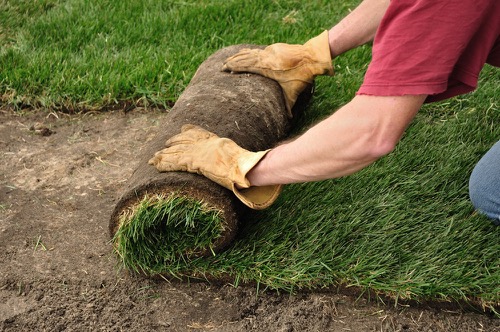
Overseeding helps fill in bare patches and holes in the yard, as fescue grass tends to grow vertically and not horizontally. Fescue, like most cool-season grasses, will germinate and grow in the cool weather of fall. The best time to overseed is in the fall when soil temperatures drop below 65 degrees. Choose a cool-season grass seed to fill in holes and patches.
If you are planting a new lawn, the easiest way to do this is with sod. Sod with fescue grass in the fall if possible as that is when fescue roots grow.
Aerating
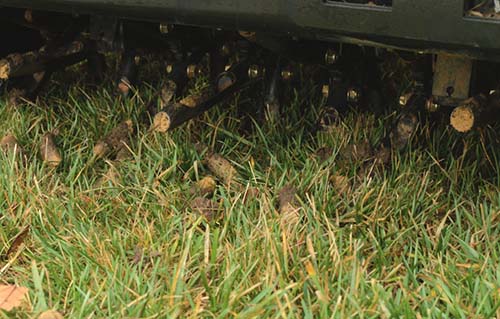
Soil can become compacted, making it hard for air, water, and nutrients to reach the roots of the turf. Aerating breaks up this compaction to allow for growth.
Aerating once per year, in the fall, will keep the lawn from becoming too compacted. Learn more about aerating here.
Fertilizing

Lawns often lack the nutrients needed to grow and thrive. Fertilizer adds missing nutrients back into lawns to help the lawn grow thicker and healthier, which in turn will ward off weeds and disease.
- Have your soil tested at your local extension office or do your own at-home soil test. The soil test results will show what nutrients your soil is lacking and what fertilizer is needed.
- Fertilize fescue grass 2-4 times per year based on the results of your soil analysis, beginning in the fall through early spring.
- Your local extension office can recommend the best time to fertilize based on your local climate and soil-type. Generally, fescue is fertilized in mid-September, in November, in March, and in late-April. Do not fertilize once the weather warms for the spring and summer (after mid-May).
Watering
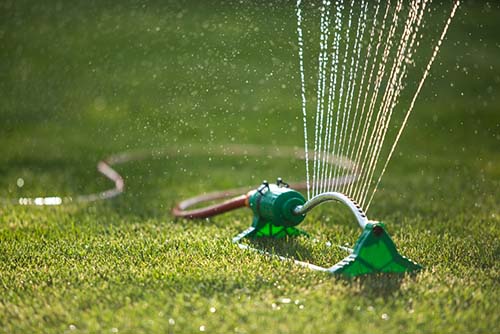
Fescue does not require ample amounts of water to grow and stay green year-round but will benefit from the occasional deep watering (at least 1 inch of water in a session, 4-6 hours) when rain falls below 1 inch per week. Water in the morning with a sprinkler to allow water time to absorb into the lawn and avoid burning the grass.
Fescue Weed and Disease Control
Fescue is susceptible to certain weeds and diseases that thrive in cool-season grasses. While proper maintenance of your lawn will truly help, some weeds and diseases may already be present in your lawn or may blow into your lawn from surrounding properties.
Fescue Weed Control
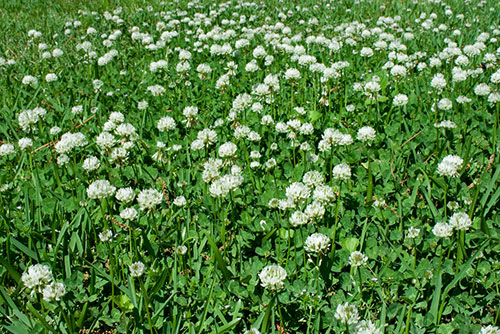
Weeds commonly found in fescue grass include goosegrass, chickweed, wild violet, and clover. Some weeds, like chickweed, will grow in the winter while others, like goosegrass, will grow in the spring and summer.
Applying pre-emergent herbicide in both the spring and fall will help prevent these weeds from growing above ground. Depending on the pre-emergent herbicide you choose, you may need to apply 1-2 times in the spring. Only apply pre-emergent in the fall if you will not be overseeding or aerating, as the pre-emergent will prevent new seeds from growing and aerating will render the herbicide ineffective.
If you already see weeds in your yard, it is too late to apply a pre-emergent herbicide. Instead, a post-emergent herbicide should be used to kill clover, goosegrass, and other weeds in your yard. Be sure to use a post-emergent herbicide labeled for fescue grass and the weed you are trying to control or you may damage your healthy lawn during treatment.
Fescue Disease Control

Fungus and bacterial diseases can quickly damage a lawn. Diseases like brown patch, pythium blight, leaf spot, and rust can be found in fescue grass, especially when moisture accumulates in the lawn during warm weather.
The best way to use fungicides in fescue grass is by applying preventative applications every 14-28 days, from late spring through the end of summer. DoMyOwn's guide on fungicides covers how to select and use fungicides for the best possible results. Like herbicides, be sure to select a fungicide labeled for fescue grass to minimize damage.
Pro Tip
Remove grass clippings from the lawn after mowing. Accumulated clippings retain moisture, helping fungus grow and spread.
Fescue Grass Pest Control

Many pests can live in fescue grass, but some cause more problems than others. Pests that can damage fescue lawns include white grubs, armyworms, and cutworms.
Insecticides can be used to both control an infestation and to prevent new pests from invading your lawn. Read our lawn care guides to learn how to control pests in fescue.
Fescue grass is popular in the northern United States due to its tolerance to cold weather and drought, and its ability to stay green year-round. With proper maintenance, your lawn can stay healthy and beautiful throughout the year.
If you have any questions about caring for your fescue grass, give the experts at DoMyOwn a call at 866-581-7378 or email us at [email protected].
Also, check out our Turf Box subscription program, where we will send you the proper herbicides and disease control products for your lawn, when you need it, so you will never forget a treatment. Learn more here.




